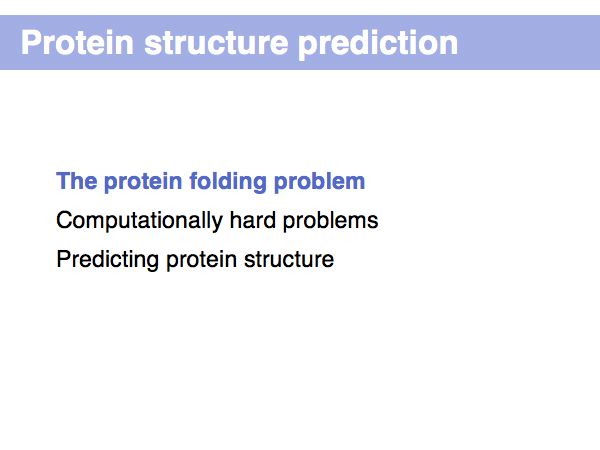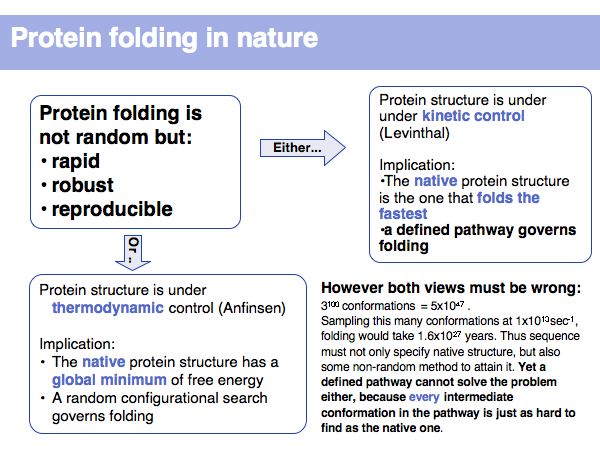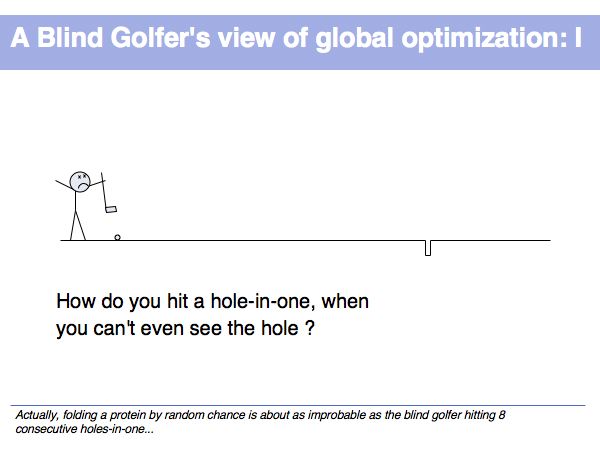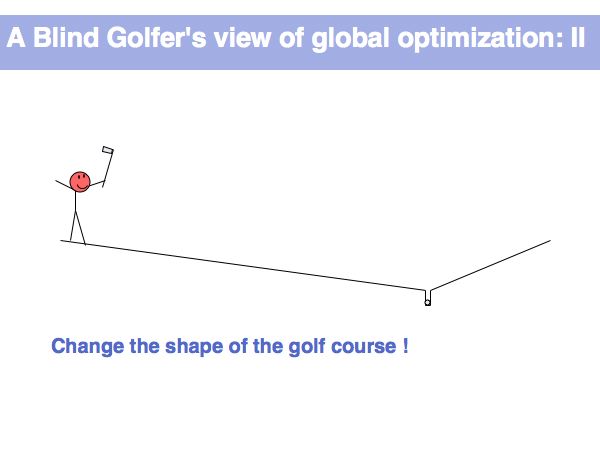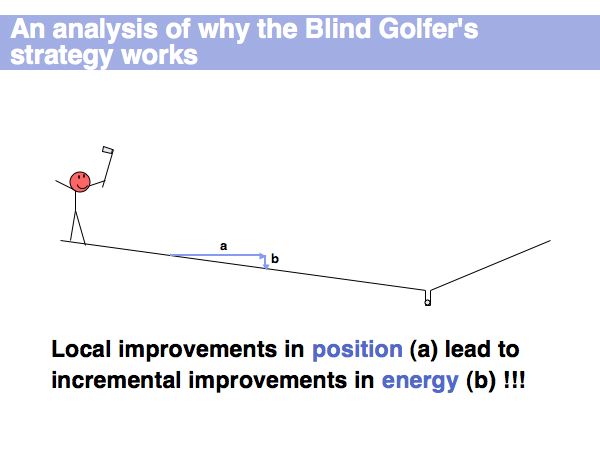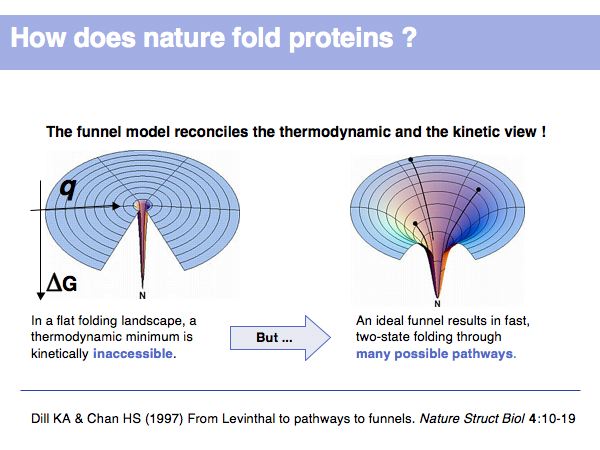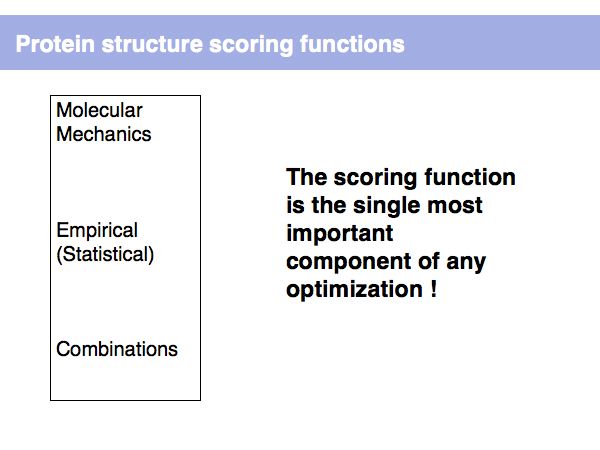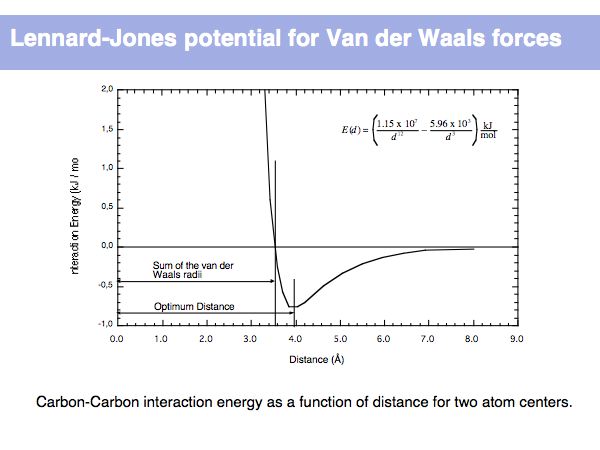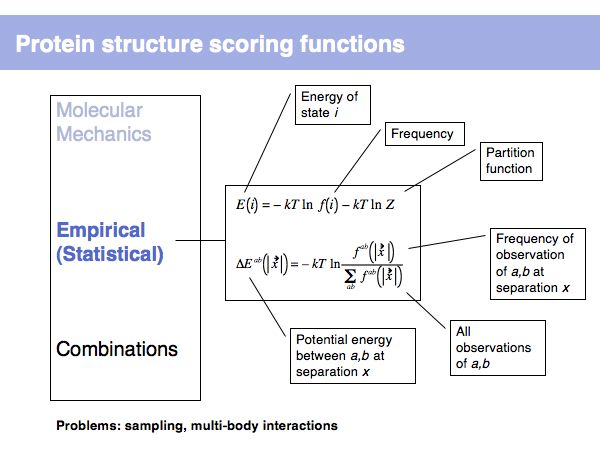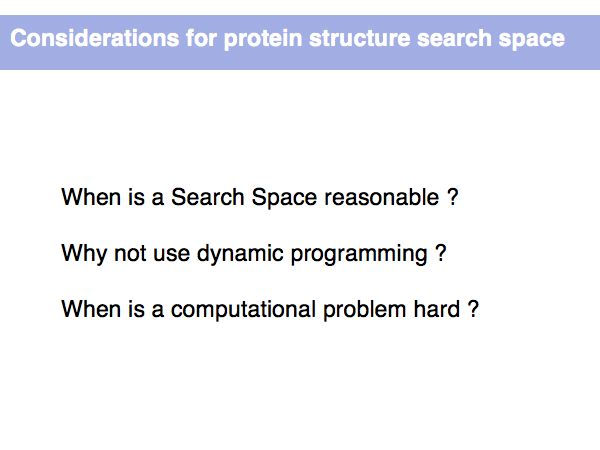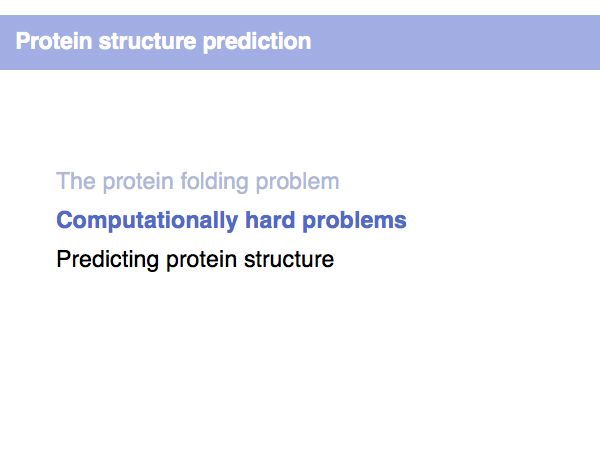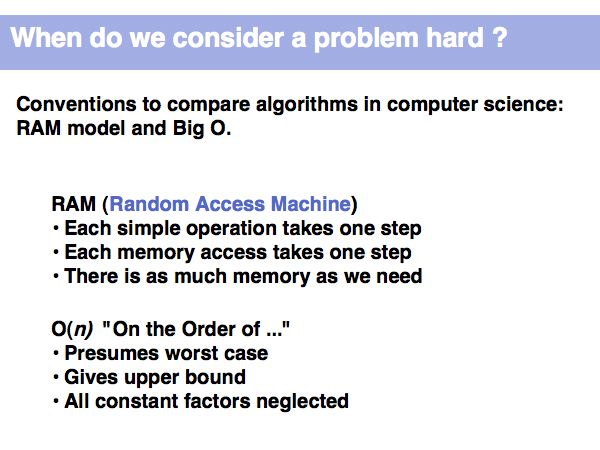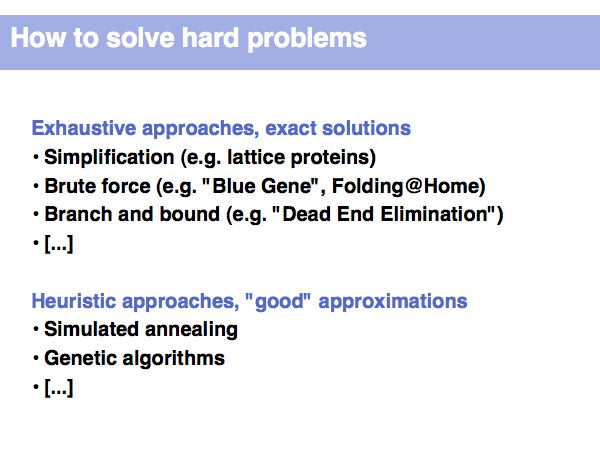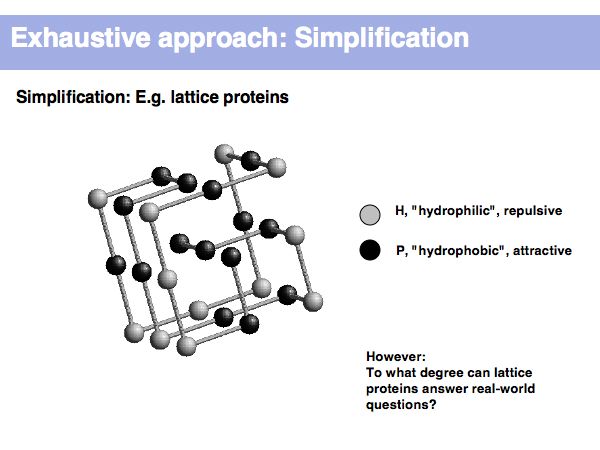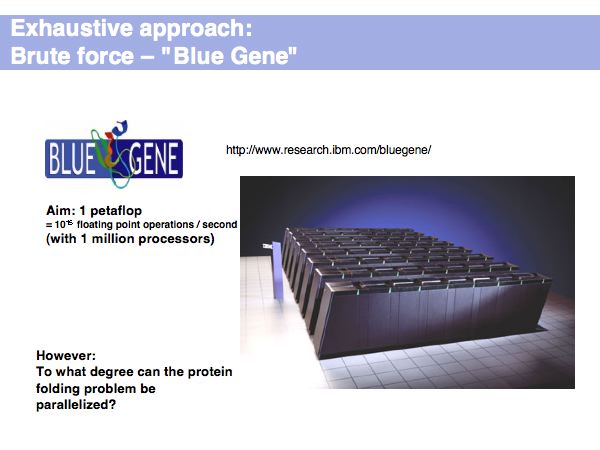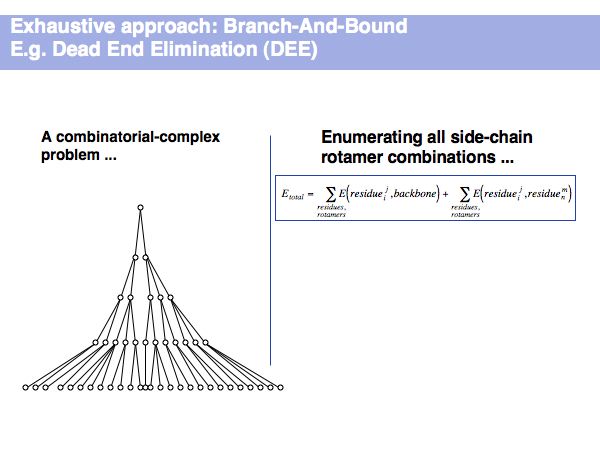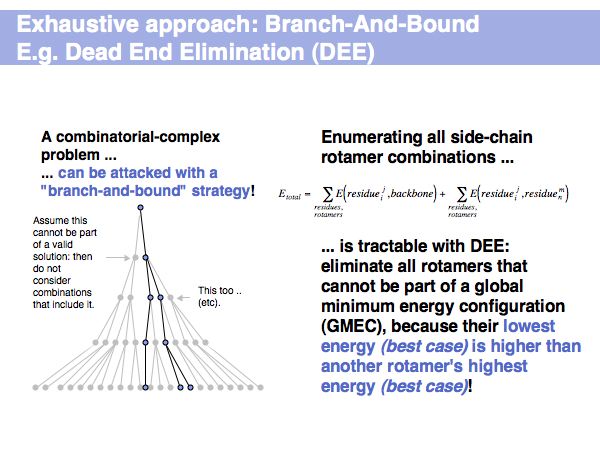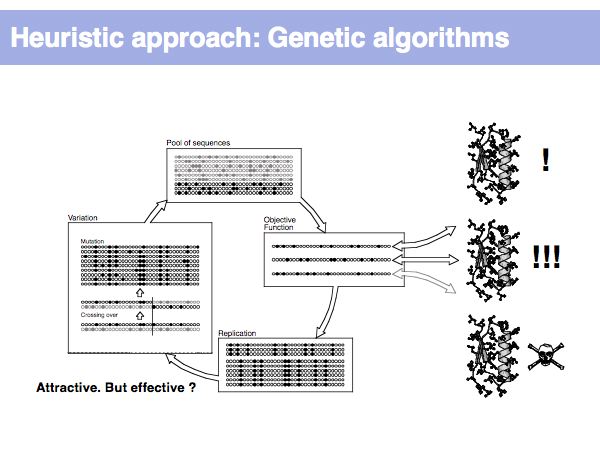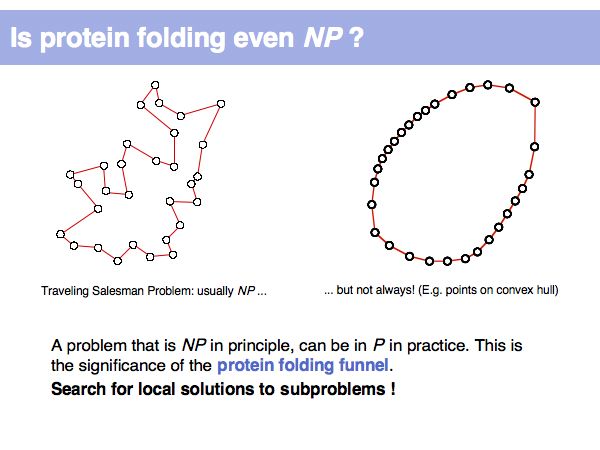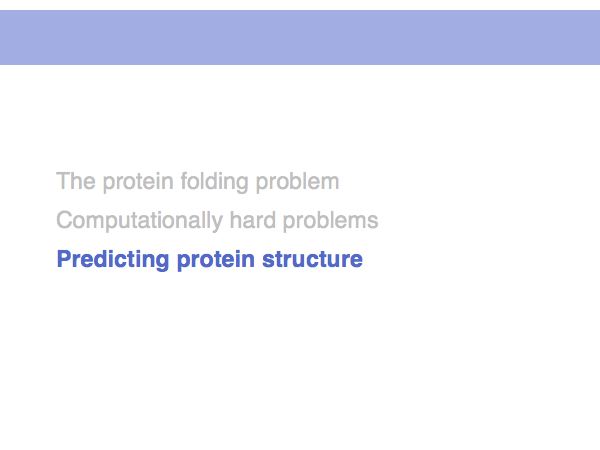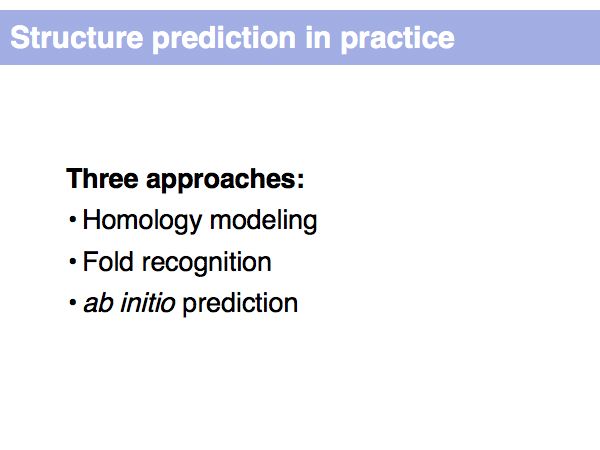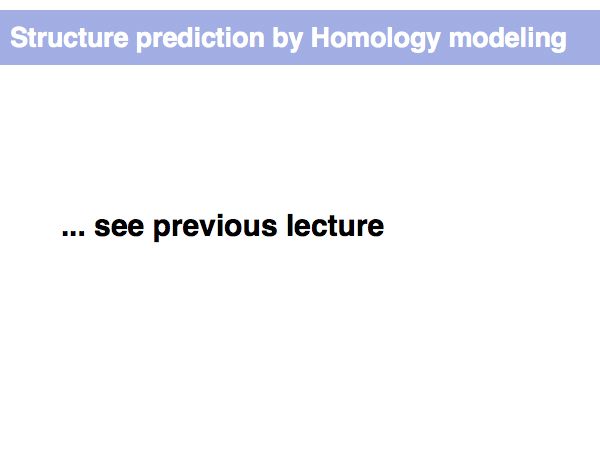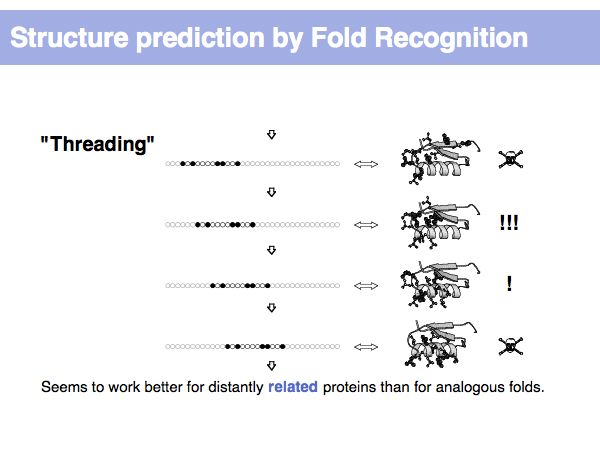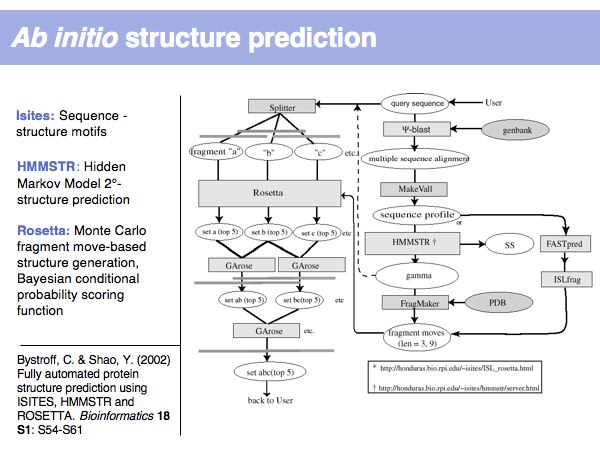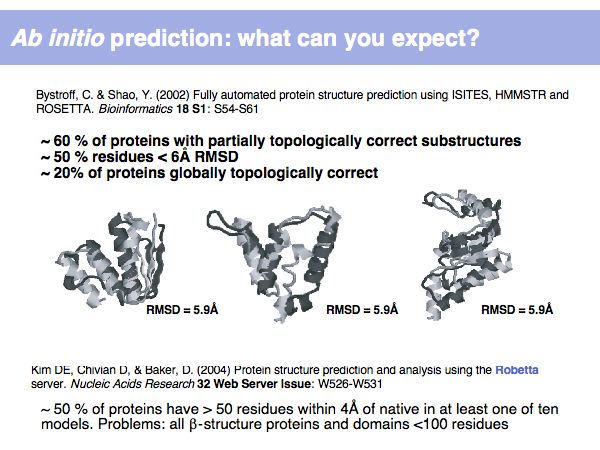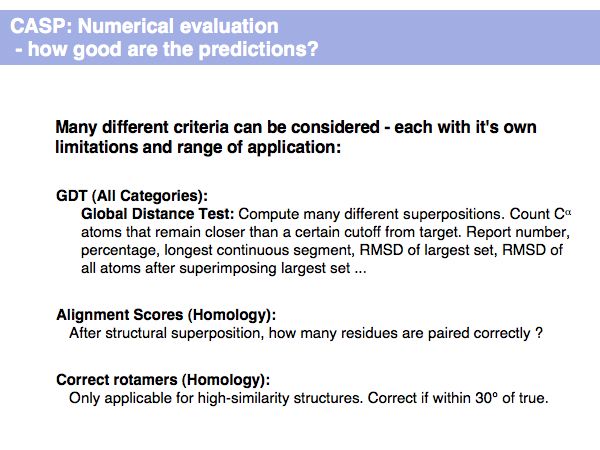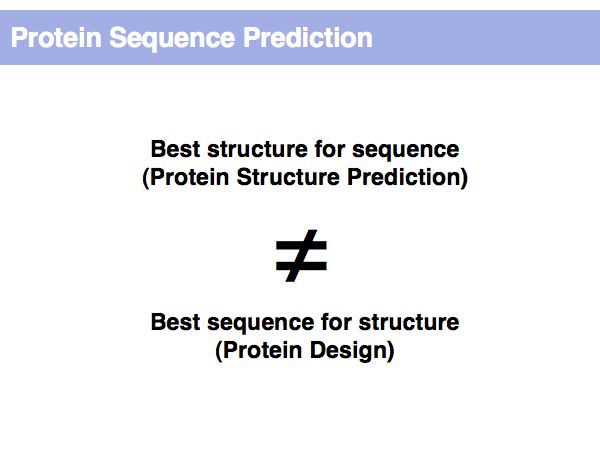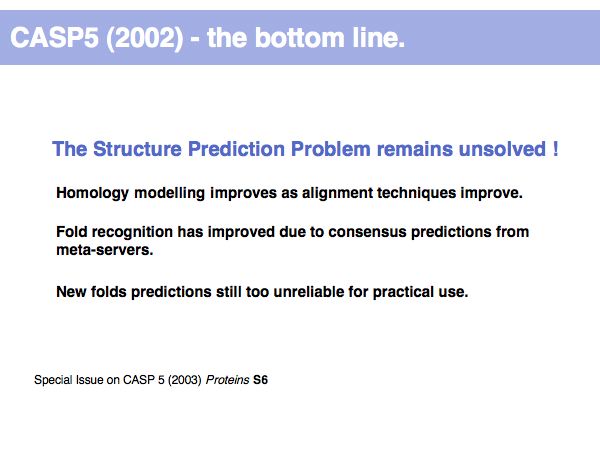Difference between revisions of "Lecture 11"
Jump to navigation
Jump to search
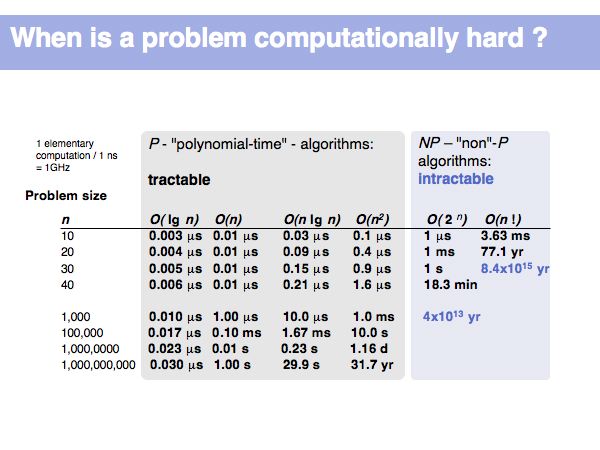
| Line 117: | Line 117: | ||
======Slide 025====== | ======Slide 025====== | ||
[[Image:L11_s025.jpg|frame|none|Lecture 11, Slide 025<br> | [[Image:L11_s025.jpg|frame|none|Lecture 11, Slide 025<br> | ||
| + | A simulated annealing strategy (in pseudocode). | ||
| + | ]] | ||
| − | |||
======Slide 026====== | ======Slide 026====== | ||
[[Image:L11_s026.jpg|frame|none|Lecture 11, Slide 026<br> | [[Image:L11_s026.jpg|frame|none|Lecture 11, Slide 026<br> | ||
Revision as of 06:38, 28 November 2006
(Previous lecture) ... (Next lecture)
Protein Structure Prediction
...
Add:
- Summary points
- Exercises
- Further reading
Lecture Slides
Slide 001
Slide 002
Slide 003
Slide 004
Slide 005
Slide 006
Slide 007
Slide 008
Slide 009
Slide 010
Slide 011
Slide 012
Slide 013
Slide 014
Slide 015
Slide 016
Slide 017
Slide 018

Lecture 11, Slide 018
Non-polynomial time-complexity problems are considered intractable, since even as the problem size 'n' grows only modestly, the time requirements grow beyond all bounds and reasonable resources. A 1,000 element problem of O(2n) complexity takes the age of the universe to compute.
Non-polynomial time-complexity problems are considered intractable, since even as the problem size 'n' grows only modestly, the time requirements grow beyond all bounds and reasonable resources. A 1,000 element problem of O(2n) complexity takes the age of the universe to compute.
